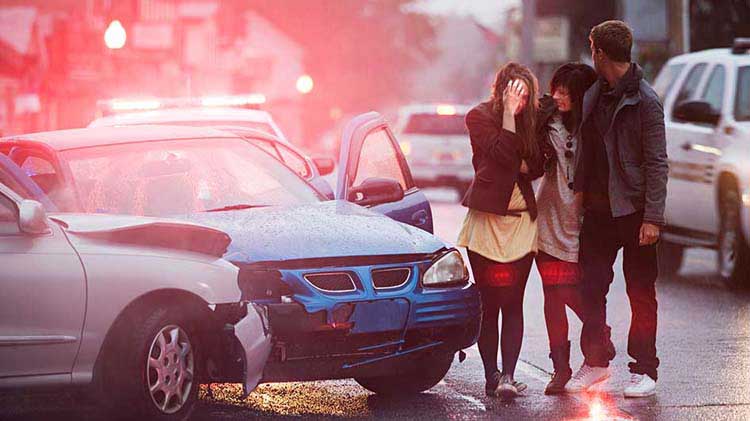Liability car insurance with your State Farm Auto Insurance falls into two categories, each designed to help protect you in different ways.
What is auto liability coverage?
State Farm® Liability insurance can be a vital safety net if you’re responsible for someone else’s injuries or property damage during a covered accident or event. In nearly every state, drivers are required by law to carry it on their policies.
What does liability insurance cover?
Bodily Injury liability coverage (BI coverage)
Helps pay for bodily injury for which you are legally liable. This means that your actions caused injury to another person and you were found legally responsible for those injuries.
What does BI coverage help pay?
- Medical expenses, like medical treatment expenses for a pedestrian you backed into in a parking lot
- Lost wages, like an injured party missed work because of their injuries caused by you in accident
- Pain and suffering, like consideration for the pain and stress to an injured party caused by you in an accident
- Defense and court costs if you are sued
Property Damage liability coverage (PD coverage)
Helps pay for damage done during a covered event to another person’s or company’s property, as well as for the loss of use of that property. This means that your actions caused damage to property (a car, a house, a tree, a fence, etc.) and you were found legally responsible for those damages.
What does PD coverage help pay?
- Vehicle repair, if you rear-end another car
- Removal of a damaged tree, like if you hit the neighbor’s old oak and it falls across a driveway
- Repairs to a building wall you crashed through, like a neighbor’s garden wall
- Defense and court costs if you are sued
What car liability insurance doesn't cover
If you're responsible for an accident, your liability coverage won't pay to repair your vehicle, nor for injuries that you personally sustained. You’ll need separate coverages for these exposures, including collision coverage, comprehensive coverage, and medical payments coverage.
Why choose State Farm for liability coverage?
We do this every day
On average, we handle 28,000+ claims daily.
We’re here 24/7/365
The State Farm app is rated 4.8/5 with 1M+ reviews in the App Store.
Insuring cars since 1922
We’re bringing over 100 years of experience to help you recover from the unexpected.
Local insurance agents
Across the nation, State Farm has over 19,000 auto insurance agents dedicated to providing you with personalized service. Reach out to one near you.
Frequently asked questions about auto liability coverage
The minimum amount of liability coverage you’re legally required to carry varies by state. Your premium cost for liability coverage may increase based on the amount of coverage you purchase.
- The premium increase may be smaller than you’d expect. And keep this in mind: your premium with additional liability coverage is likely to cost you less than what you’d pay if you’re in an accident and not properly covered.
- If you decide not to purchase additional liability coverage, you should ask yourself this: “How much can I afford to pay out of my own pocket if I'm responsible for an accident?"
- Minor "fender-benders" are often covered by the liability coverage minimums set by your state. But it only takes one accident to disrupt life as you know it.
Why not further protect your family and assets by choosing higher liability coverage?
It ranges in price based on your coverage limits.
Liability-only car insurance may be the right option for you depending on your vehicle’s value or age. Talk to a State Farm agent to learn more.
A liability insurance policy covers you and others, as defined in the policy, when you are responsible for property damage or injuries to others caused by an auto accident.
While most states require drivers to carry basic liability insurance, which offers the minimum coverage limits required by law, it’s a good idea to consider purchasing higher coverage limits than your state requires.
Why? Let’s say you were distracted while backing out of a parking space and you didn’t see a car behind you that happened to be driving by. And then you hit that car, slightly injuring the driver and her passenger.
After an investigation, you’re determined to be “at fault” for the accident. Your auto liability coverage will help pay for the damage to the car you hit as well as for the medical bills (and other costs) from the injuries sustained by the driver and the passenger, including pain and suffering, and lost wages up to your coverage limits.
If the damages you cause exceed the liability limits you have chosen, you could find yourself personally liable for all of the costs that exceed the amount your insurance policy can pay. If you’re unable to pay those costs, it could result in consequences, like garnished wages, liens against your assets and even court fees.
To fully understand the difference between minimum liability coverage and the amount of coverage you may actually need, contact a State Farm® agent.
If the damage caused exceeds your liability coverage limits in an accident, you may be responsible for paying the remaining costs out of pocket. This could include medical expenses, property damage, and legal fees that exceed your policy limits. To help protect yourself from such financial risk, consider increasing your liability coverage or adding an umbrella policy.
Yes, your liability coverage may apply as excess coverage when you drive someone else’s car.
Your driving record might be a factor in determining your liability coverage and premiums. A clean driving record could result in lower insurance rates, as it indicates a lower risk of accidents. Conversely, a record with accidents, traffic violations, or claims, may lead to higher premiums, as insurers may view you as a higher risk. Maintaining a good driving history may help you secure better rates and coverage options.
Get a local agent who gets you
There’s a State Farm agent nearby ready to offer personalized service to fit your specific needs.
Related insurance coverages
Simple Insights® on liability coverage
Looking for help protecting your vehicle? Simple Insights draw on over 100 years of State Farm knowledge around liability insurance.
What is liability insurance coverage?
Discover what liability car insurance covers, why it's required in some states and how it can help protect you financially if you are involved in a crash.
What does liability insurance cover?
Discover what liability car insurance covers, including bodily injury (BI) and property damage (PD), with examples of covered expenses.
Liability insurance gaps: What it doesn’t cover and why more protection may be needed
Liability insurance doesn't cover your car or injuries. Learn how collision, comprehensive and medical payments can help you achieve full auto protection.
How to read auto insurance quotes
Explore how liability, comprehensive coverage, deductibles and other coverage choices can affect your auto insurance quote and overall costs.
return to reference 1Based on the State Farm 2024 Impact Report.
State Farm (including State Farm Mutual Automobile Insurance Company and its subsidiaries and affiliates) is not responsible for, and does not endorse or approve, either implicitly or explicitly, the content of any third-party sites hyperlinked from this page. State Farm has no discretion to alter, update, or control the content on the hyperlinked, third-party site. Access to third-party sites is at the user's own risk, is being provided for informational purposes only and is not a solicitation to buy or sell any of the products which may be referenced on such third-party sites.
Please remember that the preceding descriptions contain only a general description of available coverages and are not a statement of contract. All coverages are subject to all policy provisions and applicable endorsements. Coverage options may vary by state. To learn more about auto insurance coverage in your state, contact your State Farm agent.
State Farm Mutual Automobile Insurance Company
State Farm Indemnity Company
Bloomington, IL
State Farm County Mutual Insurance Company of Texas
Richardson, TX



